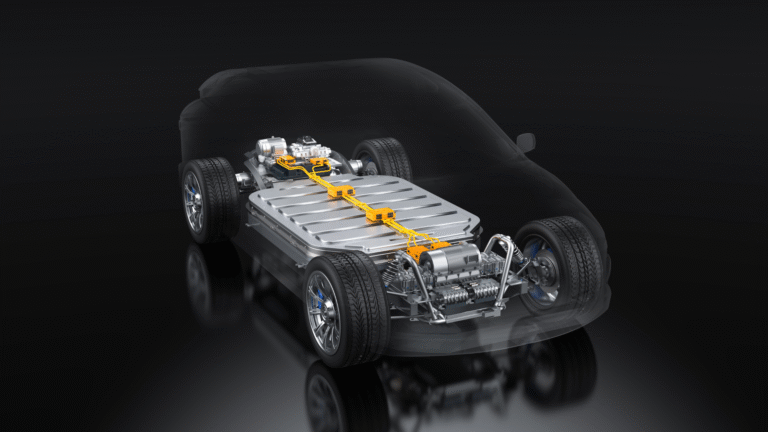Electric vehicle (EV) adoption is accelerating in Australia, and with it comes the growing demand for fast, convenient ways to power up. While charging infrastructure is expanding rapidly, one alternative solution continues to spark interest globally: battery swapping.
Popularised by Chinese automakers like NIO and gaining momentum in parts of Asia and Europe, battery swapping allows drivers to replace a depleted battery with a fully charged one in minutes — without waiting for traditional charging.
But is this model viable for Australia? Let’s take a closer look at what battery swapping is, its pros and cons, and whether it could realistically play a role in the Australian EV landscape.
—
Table of Contents
- What Is Battery Swapping?
- How It Works: The Technology Behind It
- Where Battery Swapping Is Succeeding Globally
- Potential Benefits for Australian Drivers
- The Challenges of Making It Work in Australia
- Who’s Experimenting with Swapping Locally?
- Battery Ownership Models: Swapping vs. Owning
- Use Cases That Make the Most Sense
- Could It Coexist with Charging Infrastructure?
- Conclusion
—
1. What Is Battery Swapping?
Battery swapping is the process of replacing a depleted EV battery with a fully charged one at a dedicated station. The entire process typically takes 3–5 minutes, comparable to filling a fuel tank.
Instead of waiting 30–60 minutes for a rapid charge, drivers roll into a station, the battery is automatically removed and replaced with a fresh one, and they’re back on the road almost instantly.
—
2. How It Works: The Technology Behind It
Battery swapping stations are highly automated. Here’s what happens:
- The car drives onto a platform.
- The system verifies vehicle identity and battery compatibility.
- Robotic arms remove the depleted battery from beneath the car.
- A fully charged battery is installed.
- The used battery is placed on a rack to recharge for the next customer.
For this to work, vehicles must be designed with swappable batteries — something most current EVs in Australia are not.
—
3. Where Battery Swapping Is Succeeding Globally
- 🇨🇳 China: NIO has deployed over 2,000 Power Swap Stations across China. Their vehicles are designed from the ground up for battery swapping.
- 🇮🇳 India: Companies like Sun Mobility and Ola Electric are piloting battery swapping for electric scooters and tuk-tuks.
- 🇮🇹 Italy: Gogoro and others have begun building battery swap networks for mopeds and micro-EVs in urban centres.
These markets benefit from high EV density, shorter-range city driving, and strong government support — factors that are not yet common in Australia.
—
4. Potential Benefits for Australian Drivers
- ⏱ Ultra-fast “refuelling” time
- ⚡ Reduces pressure on peak-hour charging infrastructure
- 🔋 Enables better battery lifecycle management via centralised charging
- 💲Potential for cheaper EVs via battery leasing
- ♻️ Easier battery recycling and repurposing
For fleet operators, taxis, and delivery vehicles — where time off the road costs money — this model could be a game-changer.
—
5. The Challenges of Making It Work in Australia
- 🚗 Lack of standardisation: Most EVs here don’t support swapping.
- 🛠 High setup costs: Each station requires millions in robotics, space, and energy supply.
- 🌏 Low EV density: Australia’s vast geography and dispersed population make dense networks harder to justify.
- 📉 Market fragmentation: With over a dozen EV brands in Australia, getting cross-brand battery compatibility is unlikely anytime soon.
- 🏗 Infrastructure rollout: It’s slower here than in China or Europe, making swapping less practical in the near term.
—
6. Who’s Experimenting with Swapping Locally?
As of 2025, battery swapping remains largely experimental in Australia:
- A few pilot trials are underway for light electric scooters and commercial vehicles.
- Local startups have explored modular swappable battery tech for last-mile delivery.
- No mainstream carmakers in Australia currently offer swappable EVs.
- State and federal governments have shown interest, but no large-scale projects are live yet.
—
7. Battery Ownership Models: Swapping vs. Owning
With swapping, you may not own your battery — instead, you lease it. This model:
✅ Lowers the upfront cost of EVs
✅ Simplifies battery maintenance
✅ Lets users always access the latest battery tech
However:
❌ You lose direct control over your battery
❌ Battery compatibility and availability could vary
❌ Adds reliance on one provider’s infrastructure
—
8. Use Cases That Make the Most Sense
In the Australian context, battery swapping may find traction in:
- Urban fleets (taxis, rideshare, last-mile delivery)
- Commercial depots with fixed routes and high utilisation
- Micro-mobility (e-scooters, e-bikes, mopeds)
- Regional mining or industrial sites with in-house EV fleets
For everyday private EV drivers? Charging will likely remain the dominant model for the foreseeable future.
—
9. Could It Coexist with Charging Infrastructure?
Yes — in fact, it may complement it.
Think of battery swapping like public transport and ride-sharing coexisting with private cars. The two systems serve different needs:
- Charging suits most private drivers and road trippers.
- Swapping can optimise uptime for fleet vehicles.
- A hybrid system allows for broader EV ecosystem resilience.
However, without vehicle standardisation, don’t expect charging to be “replaced” anytime soon.
—
10. Conclusion
Battery swapping is a fascinating and proven technology in other parts of the world. But in Australia, its success depends on infrastructure investment, fleet applications, and vehicle compatibility.
For now, it remains a niche — but promising — alternative to traditional charging, especially for commercial use. As EV adoption matures, the question may not be “charging or swapping?” but rather “what mix of both best suits our needs?”
—
Is battery swapping the future of EV refuelling in Australia? Discover how it works, where it’s thriving globally, and whether it could realistically replace charging Down Under.
